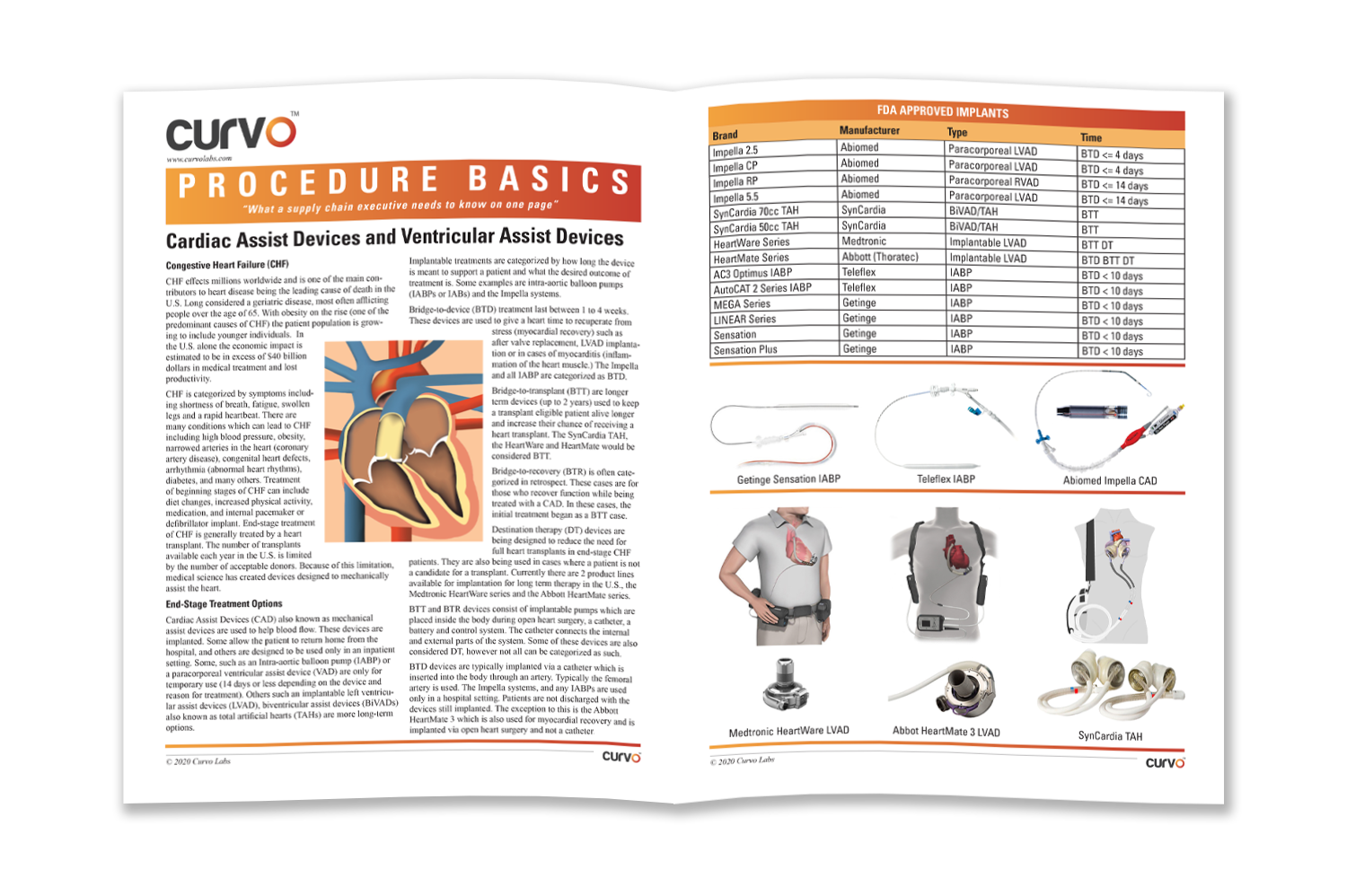
Mechanical assist devices are man-made pumps that temporarily support the heart’s pumping mechanics. This article breaks down the basics of these important devices for the healthcare supply chain.
Different Types of Mechanical Assist Devices
Congestive Heart Failure (CHF)
CHF affects millions worldwide and is one of the main contributors to heart disease being the leading cause of death in the U.S. Long considered a geriatric disease, it most often afflicts people over the age of 65. With obesity on the rise (one of the predominant causes of CHF) the patient population is growing to include younger individuals. In the U.S. alone, the economic impact is estimated to be in excess of $40 billion dollars in medical treatment and lost productivity.
CHF is categorized by symptoms including shortness of breath, fatigue, swollen legs and a rapid heartbeat. There are many conditions which can lead to CHF including high blood pressure, obesity, narrowed arteries in the heart (coronary artery disease), congenital heart defects, arrhythmia (abnormal heart rhythms), diabetes, and many others.
Treatment of beginning stages of CHF can include diet changes, increased physical activity, medication, and internal pacemaker or defibrillator implant. End-stage treatment of CHF is generally treated by a heart transplant. The number of transplants available each year in the U.S. is limited by the number of acceptable donors. Because of this limitation, medical science has created devices designed to mechanically assist the heart.
End-Stage Treatment Options
Cardiac Assist Devices (CAD), also known as mechanical assist devices, are used to help blood flow. These devices are implanted. Some allow the patient to return home from the hospital, and others are designed to be used only in an inpatient setting. Some, such as an intra-aortic balloon pump (IABP) or a paracorporeal ventricular assist device (VAD) are only for temporary use (14 days or less depending on the device and reason for treatment). Others such an implantable left ventricular assist devices (LVAD) and biventricular assist devices (BiVADs) also known as total artificial hearts (TAHs) are more long-term options.
How Long Mechanical Assist Devices Are Used
Implantable treatments are categorized by how long the device is meant to support a patient and what the desired outcome of treatment is. Some examples are intra-aortic balloon pumps (IABPs or IABs) and the Impella systems.
Bridge-to-device (BTD) treatment lasts between one to four weeks. These devices are used to give a heart time to recuperate from stress (myocardial recovery) such as after valve replacement, LVAD implantation or in cases of myocarditis (inflammation of the heart muscle.) The Impella and all IABP are categorized as BTD.
Bridge-to-transplant (BTT) are longer term devices (up to two years) used to keep a transplant eligible patient alive longer and increase their chance of receiving a heart transplant. The SynCardia TAH, the HeartWare and HeartMate would be considered BTT.
Bridge-to-recovery (BTR) is often categorized in retrospect. These cases are for those who recover function while being treated with a CAD. In these cases, the initial treatment began as a BTT case.
Other Uses for Mechanical Assist Devices
Destination therapy (DT) devices are being designed to reduce the need for full heart transplants in end-stage CHF patients. They are also being used in cases where a patient is not a candidate for a transplant. Currently there are two product lines available for implantation for long-term therapy in the U.S., the Medtronic HeartWare series and the Abbott HeartMate series.
BTT and BTR devices consist of implantable pumps which are placed inside the body during open heart surgery, plus a catheter, a battery and control system. The catheter connects the internal and external parts of the system. Some of these devices are also considered DT, however not all can be categorized as such.
BTD devices are typically implanted via a catheter which is inserted into the body through an artery. Typically the femoral artery is used. The Impella systems, and any IABPs are used only in a hospital setting. Patients are not discharged with the devices still implanted. The exception to this is the Abbott HeartMate 3 which is also used for myocardial recovery and is implanted via open heart surgery and not a catheter.
Get the full Procedure Brief on Mechanical Assist Devices.

